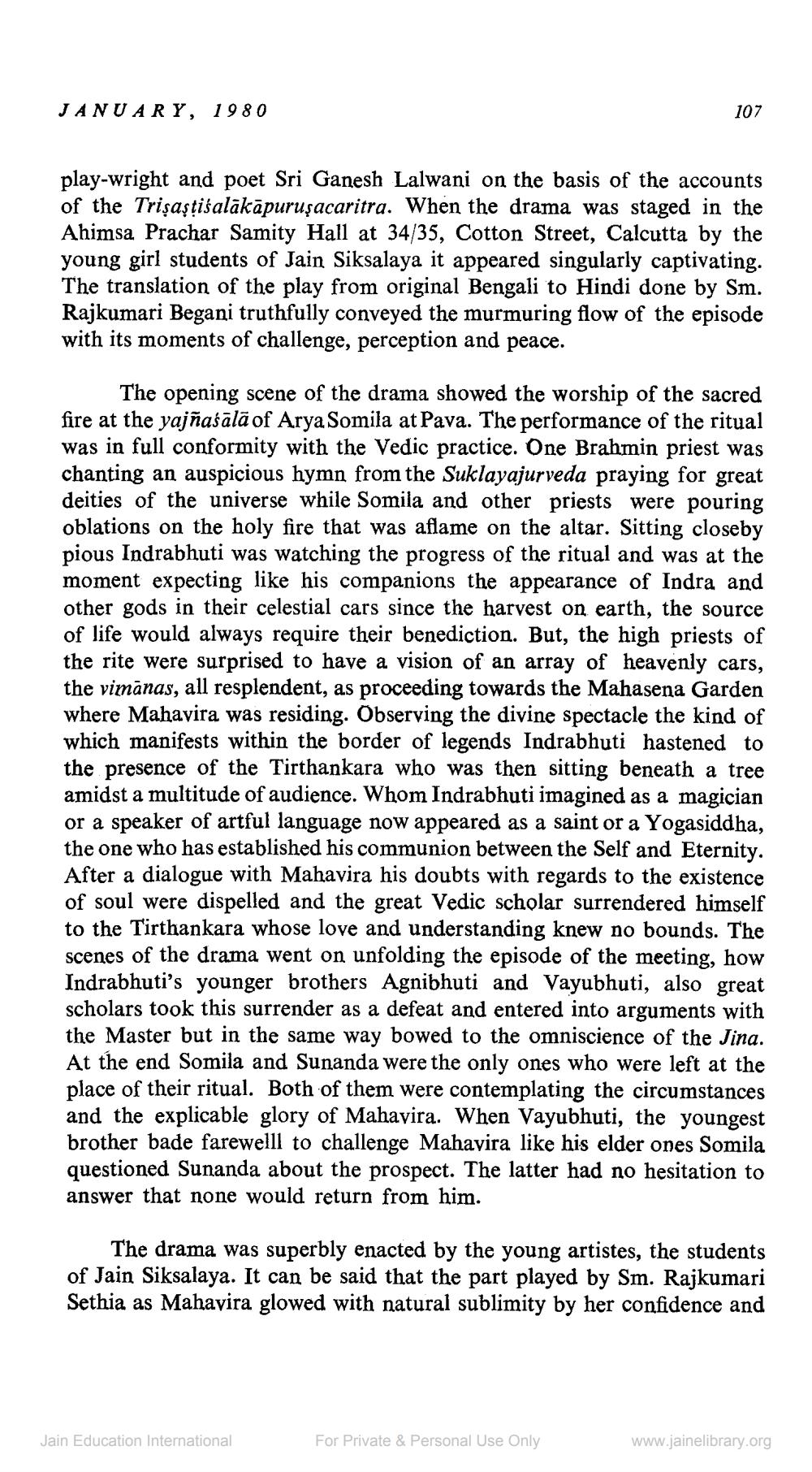________________
JANUARY, 1980
play-wright and poet Sri Ganesh Lalwani on the basis of the accounts of the Trişaşṭisalākāpuruṣacaritra. When the drama was staged in the Ahimsa Prachar Samity Hall at 34/35, Cotton Street, Calcutta by the young girl students of Jain Siksalaya it appeared singularly captivating. The translation of the play from original Bengali to Hindi done by Sm. Rajkumari Begani truthfully conveyed the murmuring flow of the episode with its moments of challenge, perception and peace.
107
The opening scene of the drama showed the worship of the sacred fire at the yajñaśālā of Arya Somila at Pava. The performance of the ritual was in full conformity with the Vedic practice. One Brahmin priest was chanting an auspicious hymn from the Suklayajurveda praying for great deities of the universe while Somila and other priests were pouring oblations on the holy fire that was aflame on the altar. Sitting closeby pious Indrabhuti was watching the progress of the ritual and was at the moment expecting like his companions the appearance of Indra and other gods in their celestial cars since the harvest on earth, the source of life would always require their benediction. But, the high priests of the rite were surprised to have a vision of an array of heavenly cars, the vimānas, all resplendent, as proceeding towards the Mahasena Garden where Mahavira was residing. Observing the divine spectacle the kind of which manifests within the border of legends Indrabhuti hastened to the presence of the Tirthankara who was then sitting beneath a tree amidst a multitude of audience. Whom Indrabhuti imagined as a magician or a speaker of artful language now appeared as a saint or a Yogasiddha, the one who has established his communion between the Self and Eternity. After a dialogue with Mahavira his doubts with regards to the existence of soul were dispelled and the great Vedic scholar surrendered himself to the Tirthankara whose love and understanding knew no bounds. The scenes of the drama went on unfolding the episode of the meeting, how Indrabhuti's younger brothers Agnibhuti and Vayubhuti, also great scholars took this surrender as a defeat and entered into arguments with the Master but in the same way bowed to the omniscience of the Jina. At the end Somila and Sunanda were the only ones who were left at the place of their ritual. Both of them were contemplating the circumstances and the explicable glory of Mahavira. When Vayubhuti, the youngest brother bade farewelll to challenge Mahavira like his elder ones Somila questioned Sunanda about the prospect. The latter had no hesitation to answer that none would return from him.
The drama was superbly enacted by the young artistes, the students of Jain Siksalaya. It can be said that the part played by Sm. Rajkumari Sethia as Mahavira glowed with natural sublimity by her confidence and
Jain Education International
For Private & Personal Use Only
www.jainelibrary.org




